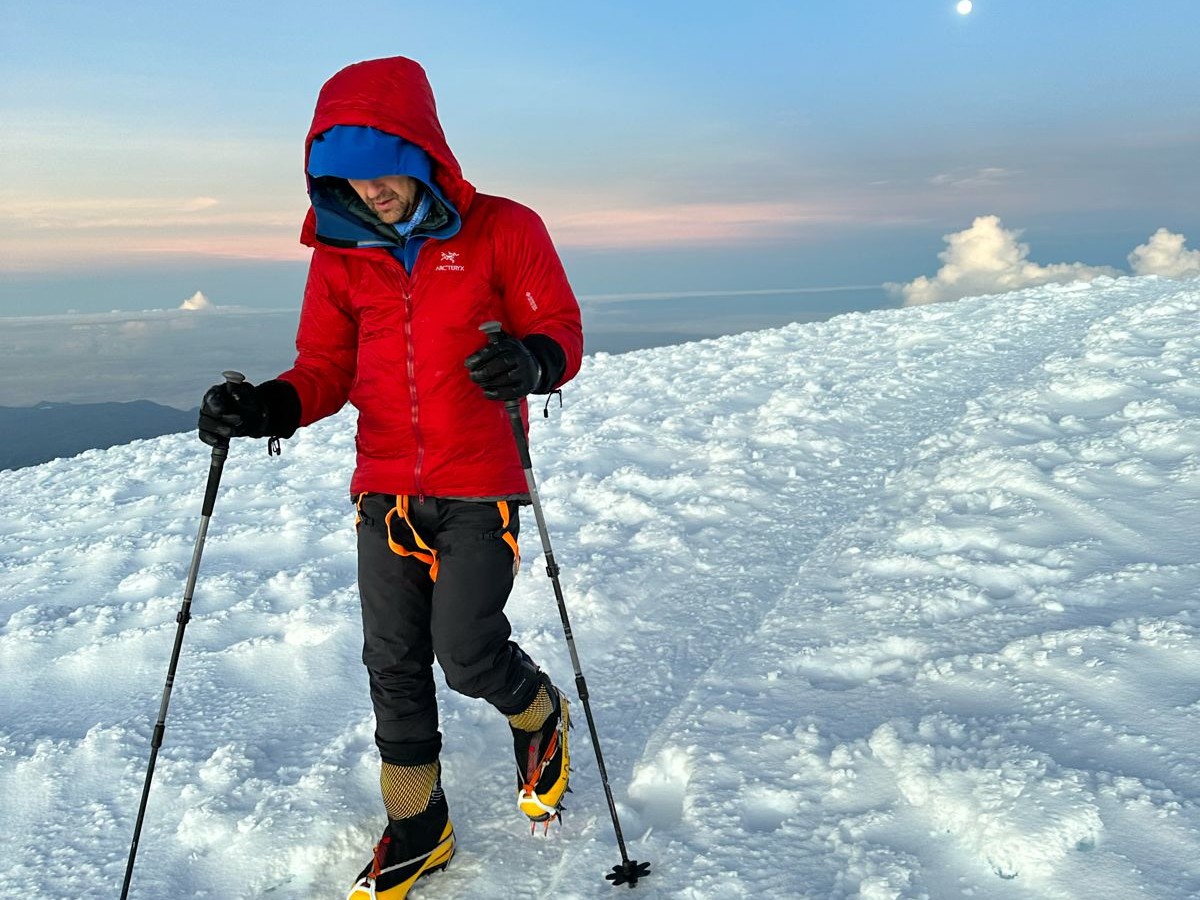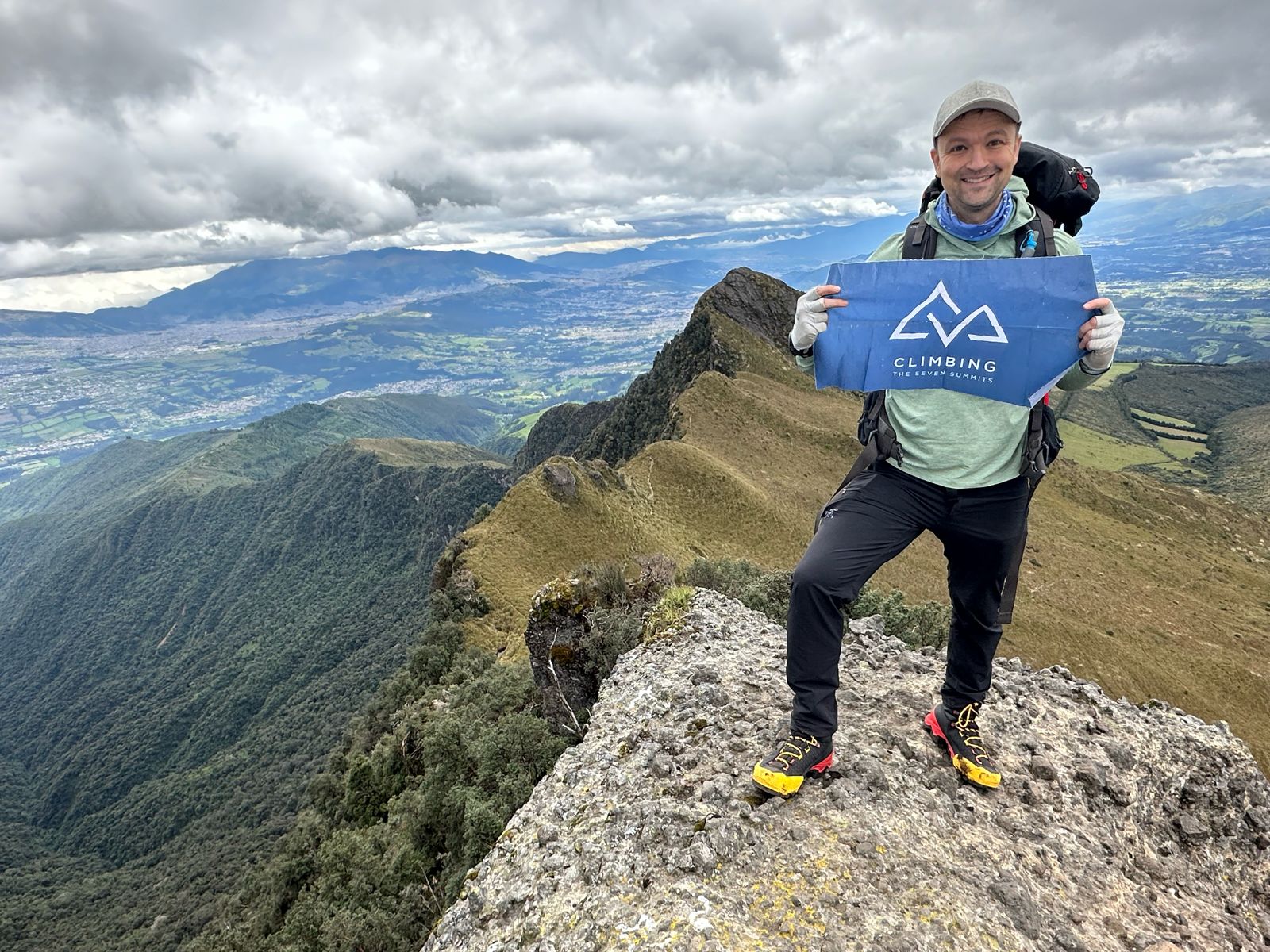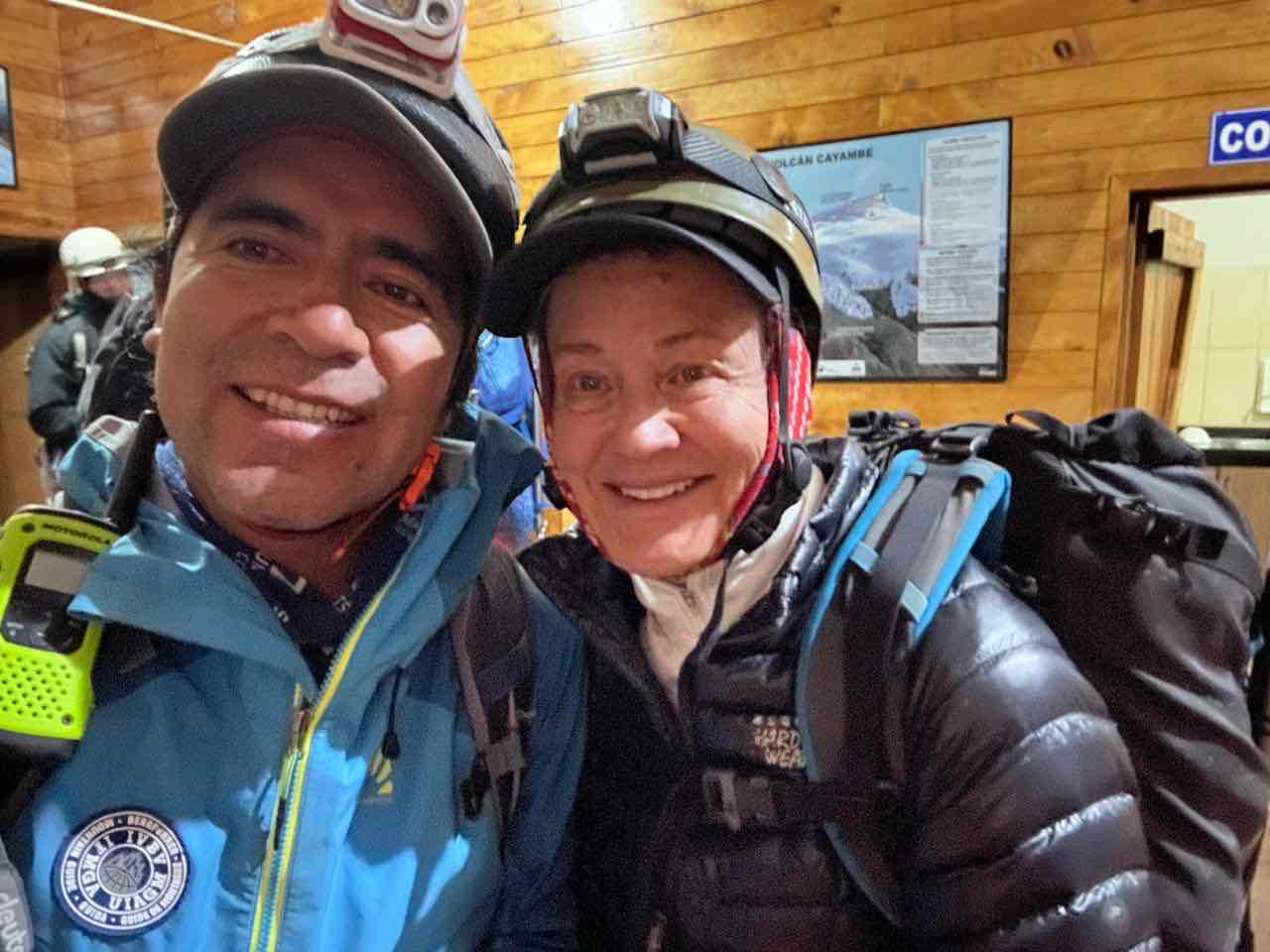Ecuador Volcanoes Training & Prerequisites
Share Expedition
Experience Level

This program is of moderate difficulty and is great for those with previous experience with crampons, ice axes, and rope travel on peaks such as Mount Baker and Mont Blanc. It requires solid fitness and an ability to perform well at altitude, but it is not beyond the abilities of who are willing to train diligently for the climb for 4-6 months ahead of time and work hard on the trip.
If you are an advanced beginner, meaning you have previous hiking and trekking experience, you are welcome to join us on this expedition but please note that this climb will be challenging and test your limits. We will do a brief snow school during the team climb and we also offer a Pre-Expedition Acclimatization & Skills Training Add-On which can help refresh or extend your knowledge prior to the expedition. If you want to join this climb but feel unsure of your ability, chat with us and we can work with you to get you up to speed prior to the climb, as we take immense pride in helping people achieve their goals.
Physical Training

Your climb begins long before you reach Ecuador. We encourage you to incorporate training into your daily routine at least six months before the departure date. As your climb rolls around, you want to be in top physical and mental condition. Being fit at home is different from being strong at high altitudes and in extreme conditions.
By the time you depart, you should be comfortably able to do multi-day hikes with strong elevation gain carrying a 40-lb pack. While you won’t necessarily always have a pack that heavy in Ecuador (you will be carrying all of your gear to the Cayambe and Cotopaxi huts and, if you do the Chimborazo add-on, to high camp), it is a great way to build your power and strength in the areas you will need it. The average pack weight in Ecuador is 20 lbs (10kg) on a hiking/climbing day and 30 lbs (15 kg) on a day we are carrying to/from a hut or high camp.
We advise a training plan that includes the following:
- Hiking uphill along outdoor trails with a heavy pack for an hour or more at least 3x per week, aiming for 1,500 vertical feet per hour.
- Longer weekend back-to-back hiking days or climbing expeditions
- Cross-training sessions, such as stair training, running, cycling, swimming, etc.
- Strength-specific training that focuses on the lower body and core.
- Interval training that boosts cardiovascular fitness and conditions your body to anaerobic conditions. Slowly increase your training (time, distance, elevation gain, etc.) each week.
Training should be done gradually to reduce the risk of injury and build yourself up over time. Please be aware that bodybuilding workouts are not as effective as endurance and climbing conditioning training. Yes, you need to be strong and put weight on before your climb, as you will inevitably lose body fat and muscle, but merely bulking in the gym shouldn’t be a substitute for climb-specific cardiovascular training and strength.
Knees are often flagged as a concern. If you need to strengthen your knees, consider hiking with water weight in your pack, empty the water for your descents, and slowly build your knee strength. Soon you will be able to descend with the same amount of weight as you climb up with as your knees strengthen.
Whatever training you choose, you need to be working out five days per week for 45 minutes or more. This is really the bare minimum. Most climbers do cardio fitness nearly every day that is fairly specific to hiking uphill and works similar muscles on the descent without the impact. Aim for 3,000 to 5,000 vertical feet per day at least once a week and twice a week in the few months leading up to the climb.
Again, it is important to put time in before the trip in order to make the climb easier and more enjoyable. You don’t want to merely struggle to the top; instead, enjoy the experience by being in good enough shape to summit comfortably. Try to increase your workout intensity and duration gradually so you peak about a week before the start of your climb.
There is no substitute for hiking with a pack, as that is the basis for any high-altitude climb. There is no better excuse to get in shape than training for a goal such as these climbs!
Mindset

Mindset and mental preparation are integral to your success on any peak.
You should be prepared to:
- Be away from home/work for the duration of your climb
- Have a desire for rugged adventure travel
- Be open to receiving and deferring to guidance, support, and advice from your guides/expedition leaders, even if you are an experienced mountaineer
- Be comfortable having open conversations with your guides
- Be able to work well in a team environment by being supportive and respectful of fellow teammates
- Be humble, respectful, and considerate even under pressure